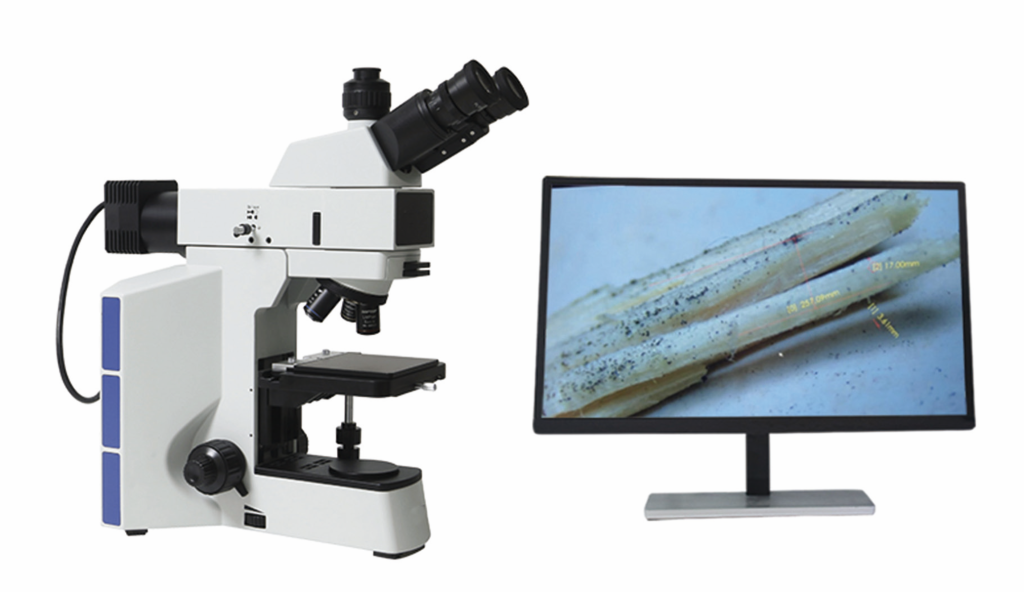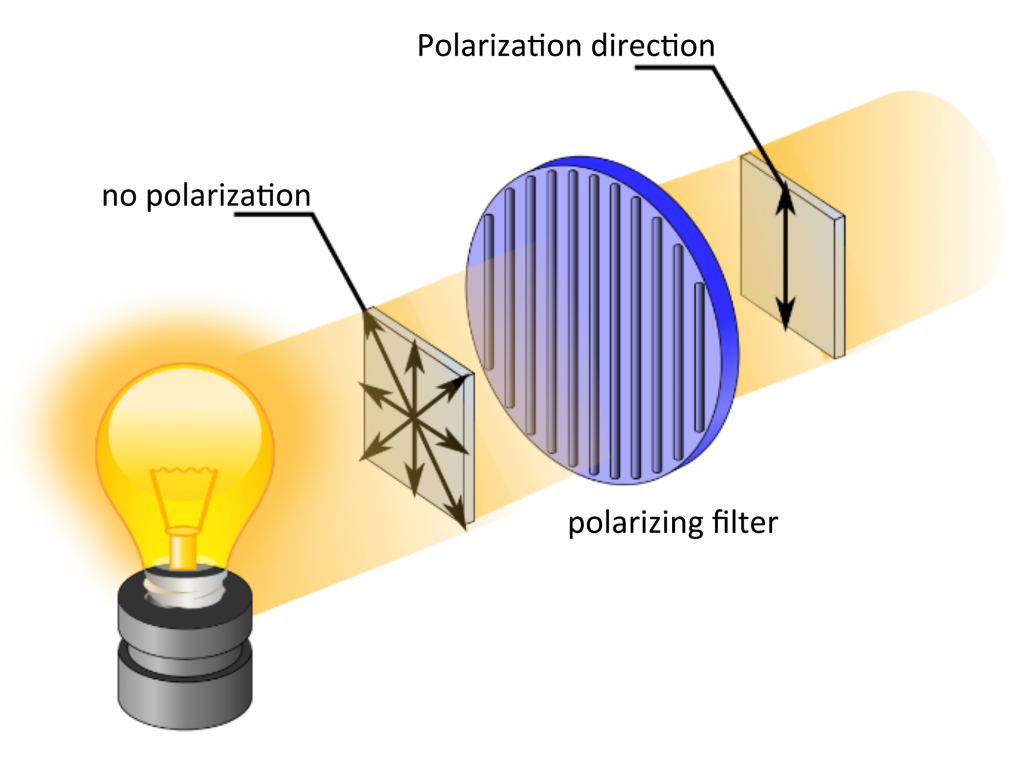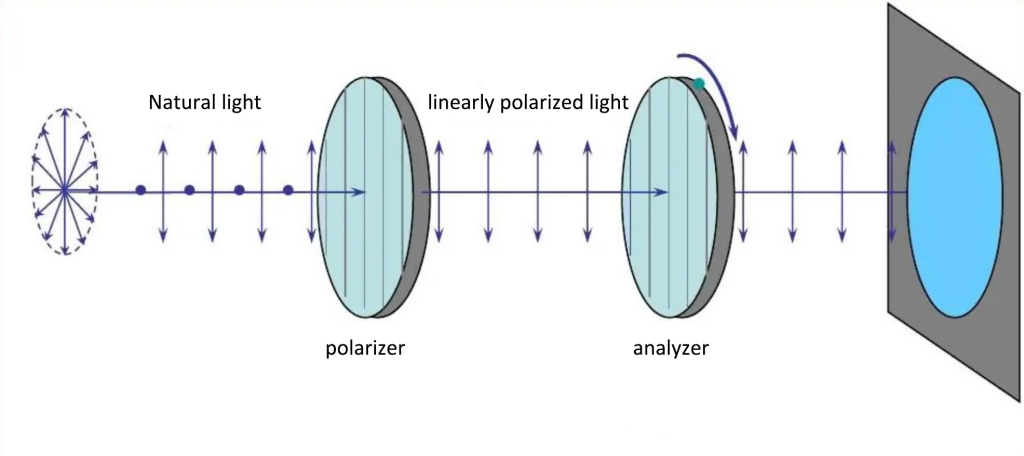Polarizing microscope is a kind of microscope that converts natural light into polarized light and is used to study transparent and opaque anisotropic materials.
We will explain the principles of polarizing microscopes, polarizers and analyzers, single refraction and birefringence, and the application fields of polarizing microscopes to help you understand polarizing microscopes.
1. What is a polarizing microscope

Polarizing microscope is a kind of microscope used to study so-called transparent and opaque anisotropic materials. It has important applications in geology and other science and engineering majors. All substances with birefringence can be clearly distinguished under a polarizing microscope. Of course, these substances can also be observed by staining, but some of them are not available, and a polarizing microscope must be used. The reflective polarizing microscope is an essential instrument for the research and identification of birefringent substances by using the polarization characteristics of light. It can be used for single polarized light observation, orthogonal polarized light observation, and conoscopic light observation.
2. About polarized light
Light has a mysterious third attribute – polarized light. Light is a kind of electromagnetic wave, and electromagnetic wave is a transverse wave. The plane formed by the vibration direction and the forward direction of the light wave is called the vibration plane, and the vibration plane of the light is limited to a certain fixed direction, which is called plane polarized light or linear polarized light.
Polarized light will let us know the orientation of the light wave vibration.
The main feature of a polarizing microscope is to change natural light into polarized light to identify whether a substance is single refraction (isotropy) or birefringence (anisotropy).
So how do you change natural light into polarized light?
First of all, we need to understand that light waves can be divided into natural light and polarized light according to the characteristics of vibration.
The vibration characteristic of natural light is that there are many vibration planes on the vertical light wave transmission axis, and the vibration amplitude distribution on each plane is the same.
Natural light undergoes reflection, refraction, birefringence, and absorption to obtain light waves that vibrate in only one direction. This light wave is called “polarized light” or “polarized light.”

No polarization (that is, the polarization directions are distributed in all directions) electromagnetic waves pass through a polarizing filter to obtain polarized light.
In a polarizing microscope, after the natural light passes through the polarizer, the natural light is limited to one vibration direction, and the other vibration planes are restricted and cannot pass through the polarizer, and the light wave is changed from natural light to polarized light.
3. Polarizer and analyzer
The most important components of a polarizing microscope are polarizing devices—polarizers and analyzers.

Among the two polarizers, the one installed between the light source and the object to be inspected is called “polarizer”; the one installed between the objective lens and the eyepiece is called “analyzer”.
If the vibration directions of the polarizer and the analyzer are parallel to each other, that is, in the “parallel analyzer position”, the field of view is the brightest. Conversely, if the two are perpendicular to each other, that is, in the case of “orthogonal offset”, the field of view is completely dark, and if the two are inclined, the field of view shows a moderate brightness.
Therefore, when using a polarizing microscope, in principle, the polarizer and the analyzer should be in the state of the orthogonal analyzer.
4. Single refraction and double refraction
When light passes through a certain substance, if the nature and path of the light do not change due to the direction of irradiation, this substance is optically “isotropic”, also known as single refraction, such as ordinary gases, liquids and non-crystalline solid.
If light passes through another substance, the speed, refractive index, absorptivity, polarization, amplitude, etc. of light are different due to the direction of irradiation, and the light property changes. This kind of substance is optically “anisotropic”. Said birefringent, such as crystals.
In the case of orthogonality, the field of view is dark. If the object under test is optically isotropic (single refractor), no matter how the stage is rotated, the field of view is still dark. This is because the vibration direction of the linearly polarized light formed by the polarizer does not change, and is still perpendicular to the vibration direction of the analyzer.
If the object to be inspected has birefringence characteristics, the field of view will become brighter at places with birefringence characteristics. This is because after the linearly polarized light emitted from the polarizer enters the birefringent body, two types of linearly polarized light with different vibration directions are produced. The polarizing direction of the mirror is orthogonal, when rotating on the stage, part of the light can pass through the analyzer, so that a bright image can be seen in the field of view.
5. Fields of application
Polarizing microscope is an essential instrument for the research and identification of birefringent substances by using the polarization characteristics of light. It can be used for single polarized light observation, orthogonal polarized light observation and conoscopic observation.
It changes ordinary light into polarized light to identify whether a substance is single refracting (isotropic) or birefringent (anisotropic).
Birefringence is a fundamental characteristic of crystals. Therefore, polarizing microscopes are widely used in mineral, chemical and other fields.

In summary, the main application areas of polarizing microscopes are:
1. Biological field:
In living organisms, different fibrin structures display pronounced anisotropy, and the use of polarized light microscopy yields details of the molecular arrangement in these fibers. Such as collagen, spinning silk during cell division, etc.
2. Identification of various biological and non-biological materials:
Such as starch property identification, drug composition identification, liquid crystal, etc.
3. Medical analysis:
Such as stones, uric acid crystal detection, etc.
4. Geological and mineral analysis:
In addition to common biomedical applications, polarized light microscopes can also be used for polarized light detection of various minerals and crystals, and are widely used in petroleum, mining and semiconductor industries. LED lighting and special filters can be applied in quality control and industrial analysis.